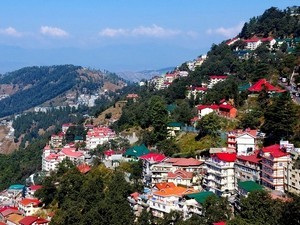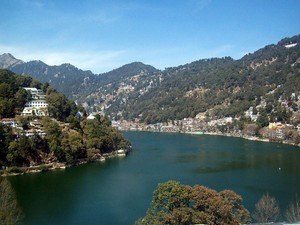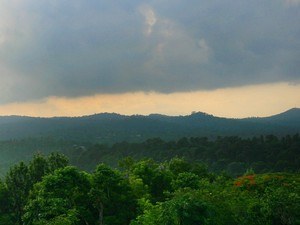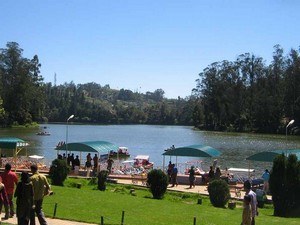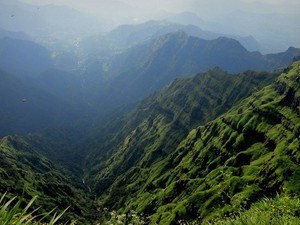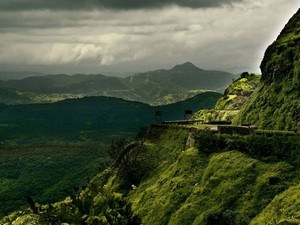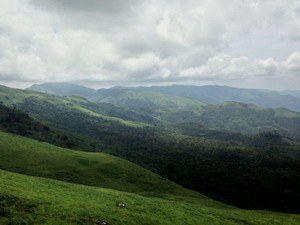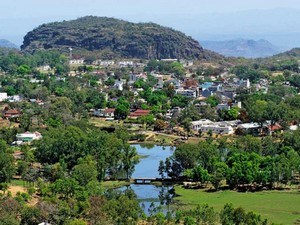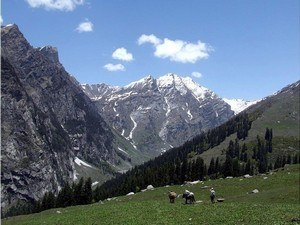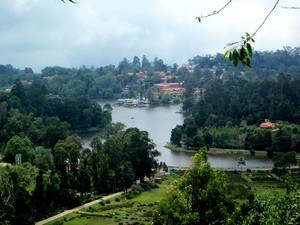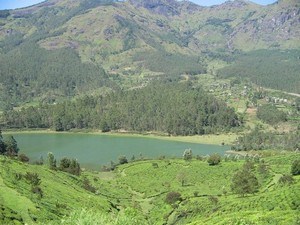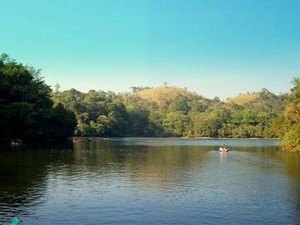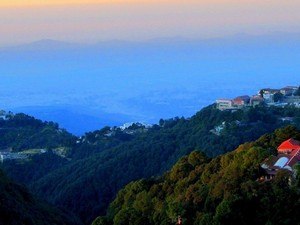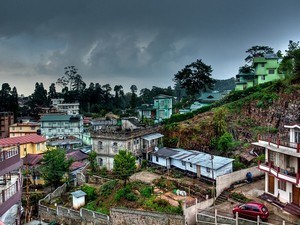1
DAY 1 : TRAVEL TO DARJEELING
DAY 1 : TRAVEL TO DARJEELING
 Sightseeing
Sightseeing
Leisure / No Sightseeing
At a distance of 2 km from Darjeeling Himalayan Railway Station, Observatory Hill is a hill top located near Chowrasta Square in the dreamy hill town of Darjeeling. It is one of the great places to visit in Darjeeling and among the popular viewpoints in Darjeeling. The hill is encircled at the bottom of the Mall Road.
The Observatory Hill is one of the oldest sites of attraction in Darjeeling and also has historical and religious significance. Built in 1765 CE by Lama Dorje-Rinzing, the Bhutia Busty Monastery, the oldest monastery in Darjeeling, was first located on Observatory Hill. The monastery was sacked by a Gorkha invasion in 1815 and it was rebuilt and shifted to its present location at Bhutia Busty in 1879.
The hill is famous for its magnificent views of Kanchendzonga and the ancient temple dedicated to Mahakal or Lord Shiva. There is a white chorten or a Tibetan memorial shrine next to the Mahakal Temple, which has the relics of Dorje Lama who was the caretaker of .....
 Duration of visit: 1 Hour
Duration of visit: 1 Hour
 Timings: 6 AM to 6 PM
Timings: 6 AM to 6 PM
At a distance of 1 km from Darjeeling Himalayan Railway Station, Lloyd's Botanical Garden or Darjeeling Botanical Garden is a beautiful garden located in the beautiful hill town of Darjeeling. The garden is among the oldest botanical gardens in Darjeeling and also one of the popular tourist places in Darjeeling.
Established in 1878 CE, the garden was named after William Lloyd, who provided the required land for it. The garden was built in reference to the Calcutta Botanical Garden. The basic motive of Lloyd's Botanical Garden is to preserve the native floral species of Darjeeling Himalayan hill region, Sikkim and its neighboring regions. Located at an altitude of almost 1800 meters, the garden has terraced lands, rolling slopes, tall trees and lush green bushes mixed with grass.
Sprawling over an area of 40 acres, the Lloyd Botanical Garden preserves some of the most exotic and endangered species of plants. It has several species of bamboo, oak, magnolia, arisaema, cotoneaster, .....
 Duration of visit: 1 Hour
Duration of visit: 1 Hour
 Timings: 6 AM to 5 PM
Timings: 6 AM to 5 PM
At a distance of 1 km from Darjeeling Himalayan Railway Station, Darjeeling Mall or Chowrasta is located at the heart of Darjeeling town. It is considered as the hub for all type of activities in Darjeeling and also among the best places to visit in Darjeeling.
The word 'Chow' means four and 'Rasta' stands for roads, essentially means that the Mall is where four roads meet. Located on top of Nehru Road, This flat piece of circular land is the major shopping area and center for commercial activities. In olden days, this was the place where the Europeans came for their evening walks. Today, the locals as well as the tourists come here to lounge and relax. In a clear day, one can also have a magnificent view of the Kanchenjunga from here.
There are benches all along the Mall Road for people to sit and enjoy the views over a cup of Darjeeling tea. Also, there are some of the old and heritage stores lined up and countless vendors selling artifacts, woollens and various figurines .....
 Duration of visit: 1 Hour
Duration of visit: 1 Hour
 Timings: 8 AM - 8 PM
Timings: 8 AM - 8 PM
2
DAY 2 : DARJEELING SIGHTSEEING
%%Itinerary_Title_Day2%%
At a distance of 11 km from Darjeeling Himalayan Railway Station, Tiger Hill is a sunrise viewpoint in Darjeeling. It is the highest point in Darjeeling and among the most picturesque places to visit in Darjeeling.
Tiger Hill stands at an altitude of 2,590 m overlooking the spur of the snow-capped mountain ranges of the Eastern Himalayas. It is one of the two points in India from where you can capture the entire panorama between Mount Everest and Kanchenjunga on a sunny morning. The first rays of the sun shoot ahead and shed light upon the twin peaks of Kanchenjunga painting it pink, and then bathing it in a beautiful orange colour, which is an amazing thing to experience.
An observation deck is built on top of the Tiger Hill to cater to hundreds of tourists who visit every day. On a clear day the summit of Tiger Hill commands the view of Kurseong Town to its south-west along with plains of North Bengal and number of major rivers like Teesta, Mahanadi, Balasun and Mechi meanders .....
 Duration of visit: 30 Mins - 1 Hr
Duration of visit: 30 Mins - 1 Hr
 Timings: 4 AM to 6 PM
Timings: 4 AM to 6 PM
At a distance of 1 km from Ghoom Railway Station and 6 km from Darjeeling, Old Ghoom Monastery, also known as Yiga Choeling Monastery, is a Buddhist monastery situated at Ghoom near the beautiful hill town of Darjeeling. It is one of the oldest and most popular Tibetan Buddhist monasteries in the region of Darjeeling and also one of the must visit places in Darjeeling.
Yiga Choeling Monastery was established in 1850 CE by the Mongolian astrologer and monk Sokpo Sherab Gyatso, who was the head of the monastery until 1905 CE. The Monastery belongs to Gelugpa or the Yellow Hat sect. This is the first ever Tibetan Buddhist monastery to be built in the Darjeeling region. During the Chinese occupation of 1959 in Tibet many high ranking monks fled to India and took refuge in this monastery.
The monastery is known for its 15 feet high statue of Maitreya Buddha or Gyalwa Shampa, which means the Buddha of the future or the Coming Buddha. This statue was created during the tenure of .....
 Duration of visit: 30 Mins
Duration of visit: 30 Mins
 Timings: 6 AM to 6 PM
Timings: 6 AM to 6 PM
At a distance of 4 km from Darjeeling Himalayan Railway, Batasia Loop is a railway loop in Darjeeling of West Bengal. Situated below the Ghoom station, it is one of the mesmerizing places to visit in Darjeeling.
Batasia Loop was built in 1919 as an engineering requirement to lower the gradient of ascent of the Darjeeling Himalayan Railway. At this point, the track spirals around over itself through a tunnel and over a hilltop. After Ghoom (the highest railway station), there is a sharp fall as the toy train moves towards Darjeeling. There was no way a narrow gauge toy train could navigate the drastic fall of about 100 feet to the gradient of the slope. So, a large circular area was built for the loop to make the slope gentle.
Batasia means airy space. The Loop serves a vital purpose for the toy train but is also an attraction in itself. The loop goes around a garden. The mountain garden is beautified with fresh green grass, seasonal and perennial flowers and shrubs. There .....
 Duration of visit: 30 Mins - 1 Hr
Duration of visit: 30 Mins - 1 Hr
 Timings: 5 AM to 8 PM
Timings: 5 AM to 8 PM
At a distance of 3 km from Darjeeling Railway Station, Padmaja Naidu Himalayan Zoological Park is a zoo situated in the beautiful hill town of Darjeeling, West Bengal. Popularly called as Darjeeling Zoo, it is one of the best zoo parks in India and among the must visit Darjeeling Tourist Places.
The zoo was formerly known as Himalayan Zoological Park and was established in 1958 as a joint venture of Government of India and Government of West Bengal. The park was renamed in 1975 when Indira Gandhi, the Prime Minister of India, visited the park and dedicated it to the memory of Padmaja Naidu, who was also a poet and daughter of the famous freedom fighter Sarojini Naidu. Situated at an altitude of 7,000 feet, this is the largest high altitude zoo in India.
Spread over an area of 67.56 acre, Padmaja Naidu Himalayan Zoological Park is the only specialized Zoo in the country and is the first recipient of the International award of 'The Earth Heroes 2014'. This zoo park is internationally .....
 Duration of visit: 1-2 Hours
Duration of visit: 1-2 Hours
 Timings: 8.30 AM to 4 PM, Closed on Thursday, Mountaineering Institute: 9 AM - 1 PM & 2 PM - 5 PM
Timings: 8.30 AM to 4 PM, Closed on Thursday, Mountaineering Institute: 9 AM - 1 PM & 2 PM - 5 PM
At a distance of 5 km from Darjeeling Himalayan Railway Station, Tibetan Refugee Self Help Centre is a rehabilitation center for the Tibetan refugees in the beautiful hill town of Darjeeling, West Bengal. It is one of the prominent landmarks of Darjeeling and also one of the best places to visit in Darjeeling.
The center was setup by Tibetan refugees on 2nd October 1959 AD. It serves as a residence of several Tibetan refugees who fled from their homeland following the footsteps of their spiritual leader, the Dalai Lama. Located on the picturesque hilltop, it is spread over an area of 4 acres of land. A committee was formed with 10 members that were responsible for the development and management of the center. Ms Gaylo Thondup was the first President of the center. Initially, they started raising funds through donations, subscriptions, charity shows and even through exhibition soccer match. Later, they received funds from domestic and international voluntary organizations as well. .....
 Duration of visit: 1 Hour
Duration of visit: 1 Hour
 Timings: 9 AM to 4.30 PM, Closed on Sundays
Timings: 9 AM to 4.30 PM, Closed on Sundays
At a distance of 2.5 km from Darjeeling Railway Station, Happy Valley Tea Estate is a vast tea garden located in Darjeeling town of West Bengal. This is the second oldest tea estate in Darjeeling after Steinthal Tea Estate and also one of the popular places to experience Darjeeling Tourism.
Spread over an area of 177 hectares, Happy Valley Tea Garden was established by Mr. David Wilson in the year 1854, which was then known as Wilson Tea Estate. In 1903, the estate was taken over by an Indian, Tarapada Banerjee, an aristocrat from Hooghly. Later Banerjee bought the Windsor Tea Estate nearby in 1929 and merged the two estates under the name of Happy Valley Tea Estate. Since 2008, the tea estate has been under the ownership of Sanjay Bansal. Today, over 1500 people worked in the tea estate.
Located in the vicinity of Darjeeling town, it is one of the major tourist attractions in Darjeeling. It also has a museum and has a factory. Situated at an altitude of 2,100 m, Happy Valley .....
 Duration of visit: 1-2 Hours
Duration of visit: 1-2 Hours
 Timings: 8 AM to 4 PM, closed on Sunday & Monday
Timings: 8 AM to 4 PM, closed on Sunday & Monday
At a distance of 2.5 km from Darjeeling Himalayan Railway, Darjeeling Peace Pagoda is a Buddhist stupa situated on the slopes of the Jalapahar hill in Darjeeling. It is one of more than 70 pagodas built around the world by the Japanese Buddhist Nipponzan Myohoji organization and among the most popular attractions in Darjeeling.
The foundation stone of the pagoda was laid in 1972 by Nichidatsu Fuji, a Buddhist monk from Japan and founder of the Nipponzan-Myohoji Buddhist Order. Inaugurated in 1992, the pagoda was designed by M. Ohka. Being the tallest structure in Darjeeling with a height of 28.5 meters, it is open to people of all faith and is purposely made to propagate peace and prosperity in the world.
Peace Pagoda houses four shining and gold-polished statues of Buddha. Also, the walls of the temple have eight sandstone carvings which depict different stories from the different stages of Gautama Buddha's life. Known for its tranquility, Peace Pagoda offers breathtaking .....
 Duration of visit: 1 Hour
Duration of visit: 1 Hour
 Timings: 4 AM to 7 PM
Timings: 4 AM to 7 PM
3
DAY 3 : VISIT KALIMPONG & TRAVEL TO GANGTOK
%%Itinerary_Title_Day2%%
 Sightseeing
Sightseeing
At a distance of 32 km from Darjeeling, and 51 km from Kalimpong, Teesta Valley Tea Estate is a vast tea garden in Rangli Rangliot Tehsil of Darjeeling district in West Bengal, India. This is one of the popular tea estates in West Bengal and among the top places to experience Darjeeling Tourism.
Teesta Valley Tea Estate derives its name from mighty river Teesta. Established in the year 1841, it is one of the oldest tea gardens in Darjeeling and one of the gold medal winner for the production of the world's finest tea. Spread over an area of 850 hectare, the tea garden is situated in the cold sunny slopes with a widened stretching of almost 2500 to 6500 feet above from the sea level, with selected China tea bushes highly planted with infinite care. These fertile slopes are blessed by cool mists, bright sunshine and crisp winds of the Kanchenjunga, where the legendary flavor of pure Darjeeling tea was conceived.
This beautiful tea garden is capable to amuse the visitors by its .....
 Duration of visit: 1 Hour
Duration of visit: 1 Hour
 Timings: 6 AM to 5 PM
Timings: 6 AM to 5 PM
At a distance of 18 km from Kalimpong Bus Station, Teesta River Rafting is the most popular adventure sport activity in Kalimpong, West Bengal. Teesta River has become one of the most popular hotspots for White Water Rafting in eastern India and among the must include things during Kalimpong Tour.
Teesta River with its green surroundings is the best choice for Rafting in Kalimpong. The Teesta river rafting has carved out deep ravines and gorges in Sikkim meandering through the hills with Kalimpong lying just off the river. This makes for quite an exciting and enthralling rafting experience.
Ideally rafting can be done enroute, between Gangtok to Darjeeling, Gangtok to Kalimpong or Gangtok to Siliguri. The routes for non-swimmers are gentle and easy without much rapids involved. However for the swimmers and experienced clients, the routes are more adventurous with high grade rapids providing quite a thrill. The rafting trips for non-swimmers in Teesta River start mostly at .....
 Duration of visit: 3 Hours
Duration of visit: 3 Hours
 Timings: 12 PM - 5 PM
Timings: 12 PM - 5 PM
4
DAY 4 : GANGTOK SIGHTSEEING
%%Itinerary_Title_Day2%%
At a distance of 8 km from Gangtok SNT Bus Station, Tashi View Point is located at Tashi in Gangtok. Situated near Ganesh Tok, it is one of the stunning viewpoints in Gangtok and among the top places to visit in Gangtok.
Tashi View Point was built by the King of Sikkim, Tashi Namgyal, who ruled Sikkim between 1914 and 1963. The circular shaped platform with railings has been built so that the visitor could view 360-degree perspective of the entire region. It is now developed and maintained by the tourism department. This point is mostly known for offering some of the best sunrise and sunset views.
This is an ideal place for nature lovers as it offers great views of the imposing Himalayan Mountains, specifically Mt. Kanchenjunga and Mt. Siniolchu. The Phodong Monastery and the Labrang Monastery are also easily visible from here. Most of tourist visits the place during early morning to witness the beautiful sunrise and the dramatic play of lights over the mountains and hills. .....
 Duration of visit: 30 Mins - 1 Hr
Duration of visit: 30 Mins - 1 Hr
 Timings: 5 AM to 6 PM
Timings: 5 AM to 6 PM
At a distance of 4 km from Tashi Viewpoint and 6 km from the Gangtok SNT Bus Station, Ganesh Tok is Hindu temple located in Gangtok. Situated close to Tashi View Point, it is one of the famous places of pilgrimage in Gangtok and among the charming places to visit in Gangtok.
Located at an altitude of 6500 feet, Ganesh Tok temple is dedicated to Lord Ganesh. The temple is so small that it can accommodate only one person at a time. One needs to climb a steep staircase to reach the temple. Adorned with colorful flags hoisted and tied across the roads, the path to Ganesh Tok almost resembles a rainbow. People visit the temple to offer prayers and also to enjoy the beautiful view. There is a circular balcony around the temple and a viewing lounge to soak in the view.
Ganesh Tok Viewpoint offers a bird-eye's view of the entire Gangtok town, rolling hills and the snowcapped mountains including Kanchenjunga. There is small place located close to this temple, which is known as Smriti .....
 Duration of visit: 30 Mins - 1 Hr
Duration of visit: 30 Mins - 1 Hr
 Timings: 6 AM to 7 PM
Timings: 6 AM to 7 PM
At a distance of 9 km from Gangtok SNT Bus Station, Hanuman Tok is a Hindu temple located atop a hill in Gangtok, the capital of the Indian state of Sikkim. Situated off from the Gangtok-Nathula Highway, it is one of the religious places to visit in Gangtok and among the top places of Pilgrimage in Sikkim.
Situated at an altitude of 7200 feet, the temple is dedicated to lord Hanuman, god of good health and strength. According to the legend, Lord Hanuman rested at this place while carrying Sanjeevani Parvat from the Himalayas to save Rama's brother Lakshmana. The idol of Lord Hanuman was erected here in 1950 when an officer named Appaji Pant had a divine dream at this location. Now, the temple was maintained and preserved by the Units of 17 Mountain Division of the Army.
The temple is divided into three sections- the main temple, old temple and the circular temple. A hint of Tibetan style of architecture is witnessed here. The main temple has a long hall which is painted in .....
 Duration of visit: 1 Hour
Duration of visit: 1 Hour
 Timings: 7 AM - 5 PM
Timings: 7 AM - 5 PM
At a distance of 3 km from Gangtok SNT Bus Station, Enchey Monastery is an ancient Buddhist Monastery situated in Gangtok, Sikkim. Located on Gangtok - Nathula road, it is one of the most popular places of pilgrimage in Sikkim and among the best places to visit in Gangtok.
The literal meaning of Enchey Monastery is the 'Solitary Monastery'. The monastery is also an important seat of the Nyingma sect of Tibetan Buddhism. More than 200 years ago, this was the site of Lama Dhrupthob Karpo, a tantric master who was known for his flying powers. Initially, a small Gompa was established by him after he flew from Maenam Hill in South Sikkim to this site in 1840 CE. Later, it was rebuilt in 1908 CE by the 10th King of Sikkim, Sikyong Tulku.
The monastery is considered sacred as it is believed that the protecting deities, Khangchendzonga and Yabdean reside in this monastery. According to a legend, the spirits of the Khangchendzonga, Yabdean and Mahakala are subdued by Guru Padmasambhava .....
 Duration of visit: 30 Mins
Duration of visit: 30 Mins
 Timings: 6 AM - 4 PM
Timings: 6 AM - 4 PM
At a distance of 8 km from Banjhakri Falls and 16 km from Gangtok, Ranka Monastery is a Buddhist monastery situated at Ranka near Gangtok, the capital city of Sikkim. Also known as Lingdum Monastery, it is one of the most popular monasteries in Sikkim and among the must visit places in Gangtok.
Built in 1998 CE, the Ranka Monastery is the seat of Zurmang Charwang Rinpoche. The present Rinpoche is the 12th successive incarnation of this lineage. It is interesting to note that the monastery is mainly run by young monks. Since it is relatively quite a new monastery and does not provide a lot of historical or strategic significance such as Rumtek Monastery. However, the beauty of the monastery has attracted a lot of film makers.
Built in the typical form of Tibetan architecture, the monastery is spread out in a vast area with great scenic views. A huge gold plated Buddha statue sits in the lotus position inside the sanctum. There are low tables lying in rows inside the sanctum .....
 Duration of visit: 30 Mins
Duration of visit: 30 Mins
 Timings: 6 AM to 5 PM
Timings: 6 AM to 5 PM
5
DAY 5 : NATHULA PASS SIGHTSEEING
%%Itinerary_Title_Day2%%
At a distance of 31 km of Gangtok, Kyongnosla Alpine Sanctuary is a wildlife sanctuary situated around the area adjoining the Tsomgo Lake in Gangtok. Along the Nathula Road, it is one of the best places to experience Gangtok Tourism.
Established in 1977, the sanctuary covers an area of 31 sq. km. The sanctuary extends from the 15 mile police check post up to the ridges bordering the famous Rong Chu and Tsomgo Lakes. Situated at an altitude ranging from 3,292 m to 4,116 m, the sanctuary boasts a wide variety of flora and fauna. The sanctuary is also the perfect place for trekking tours. The views of Khangchendzonga peak are awesome from the sanctuary. Since it is situated close to India-China border at Nathu La, the place is well conserved by the Indian Army.
The sanctuary is very rich in natural vegetation which comprises of various rare species of plants and trees that are hard to find somewhere else. Some of the common species of vegetation seen here are tall juniper, rhododendron, .....
 Duration of visit: 30 Mins
Duration of visit: 30 Mins
 Timings: 8 AM to 6 PM
Timings: 8 AM to 6 PM
At a distance of 17 km from Nathula Pass and 38 km from Gangtok, Tsomgo Lake or Tsongmo Lake is a glacial lake located in the East Sikkim district of Sikkim. Also known as Changu Lake, it is one of the top places to visit in Gangtok and among the beautiful lakes in Himalayas.
Located at an altitude of 3,753 m, Tsongmo Lake is one of the few and awesome high altitude lakes in India. In Bhutia language Tsomgo means 'Source of the Lake'. The lake gets its water from the melting snow on the surrounding mountains. The lake is formed in an oval shape and has a surface area of 60 acres. The maximum length of the lake is 1 km and an average depth of the lake is 15 m. The River Lungtze Chu originates from this lake and further falls into Rangpo-chu.
Highly revered by the Buddhists and Hindus, the lake surface reflects different colors with change of seasons. According to the history, the colour of water of this lake was studied by Lamas so as to forecast about the future. They believed, .....
 Duration of visit: 30 Mins - 1 Hr
Duration of visit: 30 Mins - 1 Hr
 Timings: 8 AM - 3 PM
Timings: 8 AM - 3 PM
At a distance of 17 km from Tsomgo Lake and 54 km from Gangtok, Nathula is a snow-shrouded mountain pass located in the northeastern state of Sikkim along the Indo-China border. Situated at an altitude of 14450 feet in the Himalayas, it is one of the most exotic places to visit in Gangtok and among the top places to experience Sikkim Tourism.
Located on the Old Silk Route, Nathula is one of the three open trading border posts between India and China. The other two are Shipkila in Himachal Pradesh and Lipulekh at the trisection point of Uttarakhand, Nepal and China. Also, it is one of the five officially agreed Border Personnel Meeting points between the Indian Army and the People's Liberation Army of China.
Deriving its name from two Tibetan words - Nathu meaning listening ears and La meaning pass,
Nathula Pass was the place through which the famous Silk Route between India and Tibet used to operate until 1962. Lines of mules used to carry silk, gold and many other items .....
 Duration of visit: 1 Hour
Duration of visit: 1 Hour
 Timings: 8 AM - 3 PM, Closed on Monday & Tuesday
Timings: 8 AM - 3 PM, Closed on Monday & Tuesday
At a distance of 16 km from Tsongmo Lake and 54 km from Gangtok, Baba Harbhajan Singh Temple is a holy shrine located in Gangtok, Sikkim. Situated on the way to Nathula Pass, it is one of the old shrines in Sikkim and among the best places to visit in Gangtok.
At an altitude of 13,123 feet, the temple is dedicated to Harbhajan Singh, a hard-working soldier in the Indian Army. Popularly called as Baba Mandir, the temple is situated between Nathula Pass and Jelepla Pass. Visitors usually cover this temple along with a visit to Tsongmo Lake or Nathula Pass.
There is a touching story associated with this temple. Harbhajan Singh was a soldier with the Indian army who slipped and fell into a nullah and was washed away while transporting mules. His body could not be found for so many days and later, he appeared in the dream of his colleague and informed about the spot where his body could be found and further asked for his Samadhi to be built there. His body was found exactly where .....
 Duration of visit: 30 Mins
Duration of visit: 30 Mins
 Timings: 8 AM - 5 PM
Timings: 8 AM - 5 PM
6
DAY 6 : TRAVEL TO SILIGURI
%%Itinerary_Title_Day2%%
At a distance of 3 km from Gangtok SNT Bus Station, Namgyal Institute of Tibetology is a Tibetan institute & museum located in Deorali area of Gangtok. Situated near Do Drul Chorten Stupa, it is one of the must visit places in Gangtok.
Namgyal Institute of Tibetology is an important Tibetan institute that promotes and carries on researches in the field of Tibetan language, art, religion and its culture. The foundation stone was laid by 14th Dalai Lama in 1957 and inaugurated by Late Prime Minister Jawaharlal Nehru in 1958. The land of the institute was donated by the late King of Sikkim Tashi Namgyal and hence the name Namgyal Institute of Tibetology.
The institute building boasts of traditional Tibetan architecture and remains as one of the finest traditional Tibetan designs in the world. It rises majestically with its tall golden towers, attractive murals and colourful frescos amidst the breathtaking natural scenery. It also has a museum, a library with rich collections .....
 Duration of visit: 30 Mins
Duration of visit: 30 Mins
 Timings: 10 AM - 4 PM, Closed on Sundays, Public Holidays & 2nd Saturdays
Timings: 10 AM - 4 PM, Closed on Sundays, Public Holidays & 2nd Saturdays
At a distance of 3 km from Gangtok SNT Bus Station, Do Drul Chorten is a Buddhist stupa situated in Gangtok, Sikkim. Situated adjacent to Namgyal Institute of Tibetology, it is one of the most magnificent and the biggest stupas in Gangtok and among the top places to experience Gangtok Tourism.
Do Drul Chorten Stupa was built by Trulshik Rinpoche, head of the Nyingma order of Tibetan Buddhism in 1945 CE. According to legend, it is believed that this entire place was once haunted by evil spirits and many people who wandered around this place became victims and died. Later, Trulshik Rinpoche came to this place for hermitage and built this popular stupa to drive away the spirits.
Popularly known as Phurba, the white Chorten Stupa is marked by a golden top dome and can be seen from various places in Gangtok. The deity enshrined on top of the stupa is known as Dorjee Phurpa or Vajra Kilaya. The Chorten is surrounded by Chorten Lakhang, where there are two huge statues of Guru Rinpoche .....
 Duration of visit: 30 Mins
Duration of visit: 30 Mins
 Timings: 8 AM - 5 PM
Timings: 8 AM - 5 PM

